The home of skiing
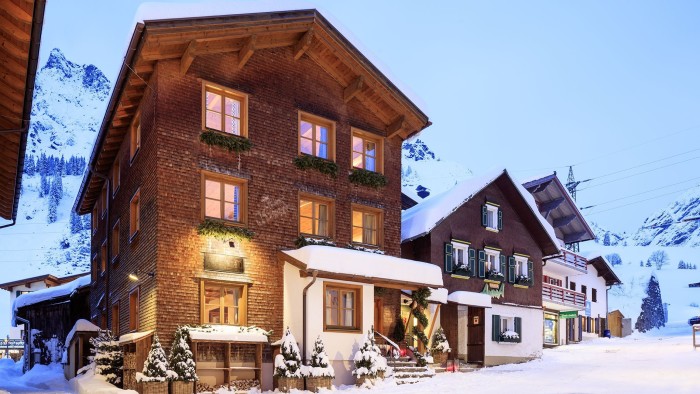
Simply sign up to the Life & Arts myFT Digest -- delivered directly to your inbox.
It was dark and snowing hard as we drove up towards Stuben, the highest village in the Klösterle valley; the taxi driver had to keep stopping to clear snow from the headlights. In the morning we opened the front door to find people skiing down the village’s main street, past cars turned into white boulders, their voices brittle against the snow-muffled silence. Fat flakes formed drooping mushrooms on fenceposts and piled up on the head and shoulders of the small bronze figure outside the 16th century church. Even the little stubby cigarette in his mouth had become a big white cigar.
It is a modest statue for a man who changed the fortunes of the region and became skiing’s first international star. Hannes Schneider, widely known in the US as the “father of modern skiing”, was born in Stuben in 1890, the son of a road builder. Aged 17, he crossed the snow-choked Arlberg mountains above the village to take up a job in St Anton, 8km away, where the Hotel Post had hired him to teach guests how to ski. Soon he was putting his own mark on the sport — adapting the upright style and Telemark turns handed down by Scandinavian farmers into a forward-leaning stance enabling greater speed and control. At the same time he developed a new system of instruction, with a series of progressive stages. In the winter of 1920-1921, he set up in St Anton what locals claim to be the world’s first ski school, and its revolutionary “Arlberg technique” carried its reputation through the Alps and beyond.
While St Anton flourished, Stuben struggled. It had been an important staging post on the road up to the Arlberg pass but an 11km railway tunnel had opened in 1884, starting at Langen, ending at St Anton, and leaving Stuben isolated and purposeless on the cold mountainside up above. While St Anton had its station, and relatively open fields for farming, Stuben’s few houses were huddled behind a high stone wall designed to deflect the avalanches that swept down from the steep mountains all around. By the time of the first world war it was at risk of being abandoned.
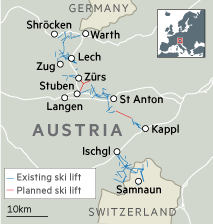
The arrival of ski tourism saw that threat recede but Stuben has always remained the poor relation. St Anton has evolved into one of the world’s most celebrated resorts, renowned for its uninhibited après-ski, while Lech, just to the north, attracts Europe’s royals and billionaires. Stuben has been stuck in the middle, noticed only by most visitors as the place where you catch the bus to connect from St Anton’s ski area to Lech’s. While those resorts boast high-speed, eight-seater chairlifts complete with heated seats and retractable covers to keep out the cold, Stuben’s ancient lifts use a simpler system: you take a blanket at the bottom, give it back at the top.
Up on the mountain, the snow kept falling. It was mid-January and the drought that had plagued the start of the ski season was finally breaking — and on a biblical scale. With poor visibility, and almost no one else around, I followed close behind my guide, Siegi Royer, the light dry snow billowing up around him so he looked like a ball of white smoke flying down the slopes. On a run called Herzl, the snow was as thrillingly deep as anything I have skied in the wilds of British Columbia or Kashmir, but 10 minutes later we were sitting down in the elegant dining room of Murmeli, a restaurant above Lech, ski boots steaming as we tasted the red wine.
Later we hooked up with a skier who I assumed, from his baggy blue jacket, faultless technique, and cavalier approach to the -15C cold (“Don’t worry, I’m from Minnesota!”) to be a lifetime ski bum. But as we rode the chairlifts it emerged that Steve the ski bum was actually Stephen Buscher, a polyglot businessman whose formidable CV includes running the Moscow office for Merrill Lynch and playing top-level roles in several oil and gas companies in Russia and beyond.
He had also grown up idolising Hannes Schneider: “He’s almost the guy who invented Alpine skiing as a sport — that’s how he’s seen in America.” So when the opportunity to buy Schneider’s childhood home in Stuben came up, Buscher leapt at the chance, investing alongside his friend Gertrud Schneider (not a relation, but the dynamic owner of the Hotel Kristiania in Lech, and daughter of Othmar Schneider, winner of Austria’s first Olympic gold medal for skiing). They embarked on a major refurbishment, just completed, turning the house into a sleek six-bedroom private chalet — I was their second guest.
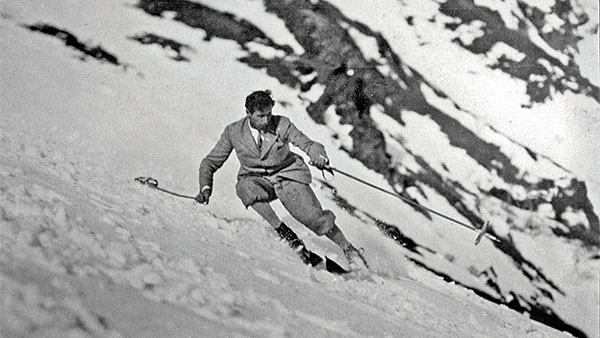
The new Haus Hannes Schneider can be rented on a self-catering basis, or with a chef and live-in staff provided from the Kristiania. Inside, there is the vintage wood panelling, roaring fire and hunting trophies you would expect, but also touches of contemporary design — beautiful glassware from Stillsegler, lighting from Gubi and Lampe Gras — and the work of numerous artists. Two portraits by Mary Waters dominate the lounge, and a light installation by Gerold Tagwerker hangs in the stairwell. There’s a small spa area downstairs, with sauna and hot tub, and a swimming pool is to be built in an adjacent barn this summer.
It is far from a shrine to Schneider, but archive photographs, sourced locally and from the US, tell the story of his extraordinary life. There are shots from some of the groundbreaking ski films, including Das Wunder des Schneeschuhs (The Wonder of Skis, 1920) and Der weiße Rausch (The White Rush, 1931), that established Schneider as the Alps’ star instructor, and brought a string of wealthy American tourists to his St Anton school. Others show him arm in arm with a bespectacled Sir Arnold Lunn, the British pioneer of ski racing and winter tourism, with whom Schneider set up the annual Arlberg-Kandahar race. The success of the Arlberg technique, said Lunn, “was due less to its tenets . . . than to the personality of Hannes. He created a mystique, and it was this mystique which made the Arlberg famous throughout the world.”
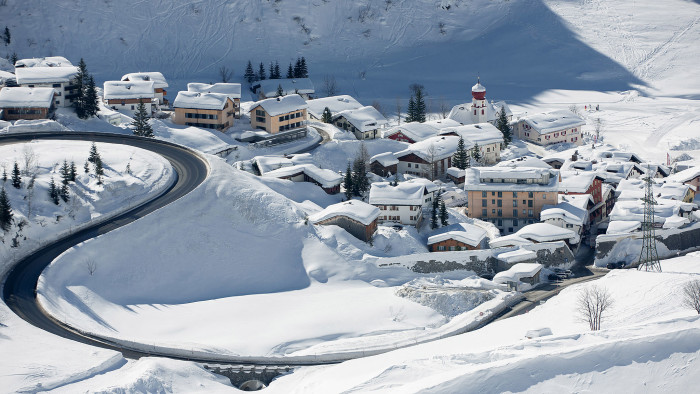
Then, in March 1938, the world’s most famous skier was marched into jail by the Nazis. A friend of prominent Jews and critic of the Nazis before the Anschluss, he was imprisoned for 25 days, then moved to house arrest in Germany. The following year, Harvey Dow Gibson, a wealthy US financier, managed to negotiate Schneider’s release (exactly how remains unclear), and bring the Austrian to be the star attraction at Gibson’s newly launched resort, Cranmore in New Hampshire. One picture on the wall in Stuben shows Schneider holding the Queen Mary’s guardrail, looking apprehensive as he crosses the Atlantic to an uncertain future. Another shows a huge crowd giving him a hero’s welcome at Cranmore.
Schneider stayed in the US until his death in 1955, his renown growing all the time. In 1958 he was inducted into the US Ski and Snowboard Hall of Fame but back in Europe he was less fêted — the statue by the church in Stuben was not erected until December 2012. “Because of his forced emigration, it was a difficult story for some people here — there was much that wasn’t said over the past 50 years,” says Christof Thöny, an Austrian ski historian and founder of the newly-formed Hannes Schneider Foundation. “But now that has changed, and over the last decade people have taken more and more interest.”
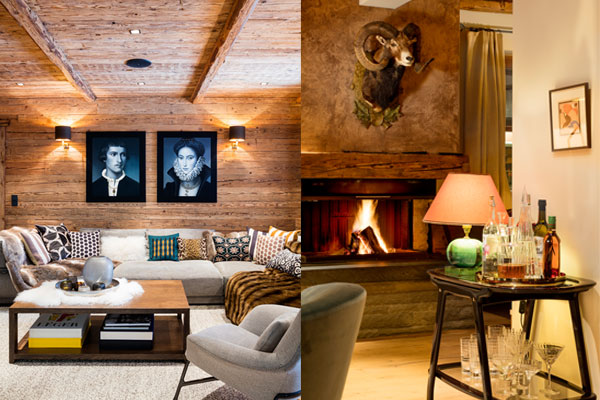
If Schneider’s legacy is on the up, so, too, are Stuben’s prospects. In December this year, two new cable cars are due to open that will finally connect Lech and St Anton’s ski areas — via Stuben — and thus remove the need for the shuttle buses that make 140 journeys each day. Suddenly Stuben, rather than being at the fringes of both areas, will find itself at the centre of a unified Arlberg ski area. “It is historic — I don’t think there has ever been a project of this scale in the Arlberg,” says Gebhard Jochum, owner of the Lorünser hotel in Zürs, a hamlet close to Lech. “Getting the bus never stopped the hardcore, but it was a psychological hurdle for the average piste skier.”
Already Stuben, home to just 110 people, has seen a surge of investment. As well as the reborn Haus Hannes Schneider, this winter has seen a major expansion of the Après Post Hotel, alongside a new chalet and apartment building and two new ski shops. One of the cable-car’s base stations has been built, and tourist officials in Stuben insist the €40m project will be ready in time for the start of the next ski season (though one of the numerous local government approvals remains outstanding, and some locals think the ribbon won’t be cut until the following year). Once open, the newly-linked Arlberg ski area will have 90 lifts — by way of comparison, Park City in Utah, itself recently joined to a neighbour to become by far the biggest resort in the US, has 40.
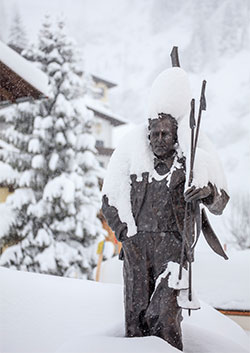
But the Arlberg has more in store. A further €45m project will see St Anton’s lifts linked by two new cable cars to those of Kappl, in the Paznaun valley to the south. According to Andreas Kleinheinz, manager of Kappl’s cable-car company, that link will be ready for December 2020 at the latest, and possibly as soon as 2018. That would take the area’s total number of lifts of 102, and make it possible to travel purely on skis and ski lifts from Warth, at the northern edge, to Kappl at the southern, some 30km as the crow flies. Even that’s not the end: from Kappl a short, free bus takes skiers to Ischgl, where another 45 lifts lead to Samnaun, over the border in Switzerland.
Such statistics rival the world’s biggest linked ski areas, the so-called “ski factories” of France, but the atmosphere in the Arlberg couldn’t be more different. Here skiers travel between ancient villages, each with distinct characters, stopping to eat in cosy mountain refuges or family-run hotels.
My skiing over, I wandered into Stuben’s narrow lanes. It may be at the middle of one of Europe’s most exciting ski projects, but there is none of the usual anxiety about the excesses of unfettered development. The same steep mountain faces and threat of avalanche that have constrained Stuben for so long now offer protection. Rudi Pichler, the longstanding tourism director, tells me there simply isn’t the space to build — at most it would only be possible to add another 200 tourist beds.
Even with this winter’s new openings, Stuben still feels like a retreat. By 5pm the streets of St Anton throb to the beat of après-ski europop, but here the rowdiest entertainment is the nagelstock in the Mondschein hotel’s cellar bar. Drinkers must try to drive a nail into a tree trunk using the thin end of the hammer; the last to succeed buys the next round. After a few attempts, it was time to catch our taxi back to the airport. As we drove out of town, the snow was still falling.
Photographs: Robin Gautier; Tourismusbüro Stuben
Details
Tom Robbins was a guest of Scott Dunn. It offers a week at the Haus Hannes Schneider from £2,300 per person, self-catering, or £2,842 catered. Both prices include a chalet manager, in-resort chauffeur, flights from London and transfers, and are based on 12 people sharing the chalet. For more on the village, see stuben-arlberg.at
Comments